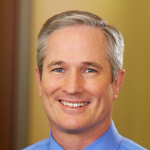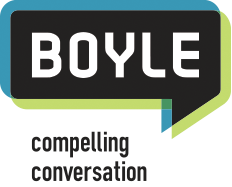Marketing for Financial Advising Firms Goes Inbound
This post is the first of what we hope will be a series of interviews with folks who are pioneering inbound marketing in fields seemingly inconducive to this new digital confluence of public relations, marketing and advertising. In fact, most of their peers maintain that their industry doesn’t lend itself to online marketing of any kind and can only get their customers through word-of-mouth or more traditional (aka “old school”) marketing efforts. Our interviewees tell a different tale, in which inbound marketing transforms the way their companies attract and convert leads. These are stories of companies capitalizing on a small window of great opportunity to pull ahead of their competitors.
Interview with Marc Fey
I started in the decidedly buttoned-up world of calculated risk: financial advising.

Marc Fey is the former Vice President of Marketing at Sacramento-based Hanson McClain, a Barron’s Top 100 investment advisory firm, serving over 4,000 clients and managing more than $2 billion. Marc joined Hanson McClain eighteen months ago, after helping a small software developer to quadruple sales over the two years prior. His experience in inbound marketing actually pre-dates the term “inbound marketing,” when in 2005, he began blogging, creating landing pages for content offerings and building email databases for a national nonprofit organization called “Focus on the Family.” His success leveraging these tools, and in 2011, adding marketing automation through HubSpot’s software platform, have enabled him to become an early leader in the practice of inbound marketing.
Kellie: First, it was great meeting you at HubSpot’s INBOUND conference, Marc. Little did I know then that you were years ahead of most of the 14,000 people who converged in Boston for what was, essentially, a massive, international users group meeting. So, what makes inbound marketing new and different from what has been practiced for decades?
Marc: I think inbound is a philosophy that strikes at the heart of the relationship between the buyer and seller. Unlike outbound marketing, which is interruptive, inbound is about building relationships by solving problems and adding value. In the old days, customers had to earn free stuff from companies; now companies have to give away free stuff to earn the trust of potential customers.
Kellie: But what made you think inbound would work in the financial advising industry (where most firms rely on referrals from existing clients and occasional dinner seminars to generate leads)? And why did it seem like a particularly good fit for Hanson McClain?
Marc: When I started at Hanson McClain, the principals had been hosting a Saturday morning call-in radio program for 20 years, so they already thought of themselves as educators and problems solvers for the community (which, of course, is the core of the inbound methodology). They also had a huge amount of great content. So, my challenge was to capture the referrals the radio show sent to the website through downloadable content offers that required users to submit some key information. The goal was, and still is today, to convert these website experiences into relationships.
Word-of-mouth is still important, but social media now makes WOM possible online, too. And regardless, people today want to check out companies without having them looking over their shoulder. They start by exploring the company’s website. That’s where we can offer a lot of valuable insights and advice that demonstrates we’re super knowledgeable and we can be trusted as a fiduciary.
Kellie: I assume you’re going after the same market that most financial advising/wealth management firms are targeting. How important is it to really define this audience?
Marc: We are continually working on our buyer personas in order to develop more empathy for clients and to create content that meets their needs and solves their problems. You can’t just develop personas and then put them on the shelf afterwards. The market is always changing; Baby Boomers are redefining who retirees are, for example. We try to understand clients’ fears, concerns and aspirations and to get to know their stories. For one thing, that stops us from just telling our story.
Kellie: So, based on your buyer personas, you’ve developed valuable content and begun to build trust and relationships with website visitors. How and when do they become actual clients?
Marc: Well, we’re targeting one buyer persona who is only starting to think about her retirement, so we may be nurturing that relationship a few years. But we’ve identified three conversion points that typically occur to turn a website visitor into a contact; a contact into a market-qualified lead; then a MQL who will agree to meet with one of our financial advisors. Then, it’s up to that advisor to make him or her into a new client. At the top of the sales funnel, we need to draw people to the website. Over the past 18 months, our traffic has grown from 7,000 visitors per month to almost 40,000. So, based on our conversion ratios through the middle and bottom of the sales funnel, we can anticipate the numbers we need to hit in each stage to make our new client goals.
Kellie: That means you’ve got to create content that engages visitors along the entire buyers’ journey. What formats do you utilize and how many campaigns do you run in an average year?
Marc: Content can be e-books, weekly e-newsletters, workshops, emails, webinars, podcasts, calculators, on-demand videos, articles, etc. These still need to be marketed in order to get them in front of people to help solve their problems and to add value, so we use mobile ads, radio ads, social media ads, retargeted email and other tools. A top level campaign might be built around a workshop series, for instance. We’ve gone from running 5 events per year to 60. Each major campaign consists of 10 or more smaller elements for nurturing different audience segments at different points in their buying journeys. We’re running six major campaigns this year, so we’re anticipating almost 100 campaign elements in total.
Kellie: Wow. That probably sounds intimidating to most firms. But you’ve managed to ramp up to this level of activity in only 18 months. So, how did you go about implementing inbound marketing into Hanson McClain’s existing marketing program?
Marc: I started with one project at a time, helping to improve upon what they were already doing – like workshops and newsletters — by incorporating some inbound elements. There was already a great content producer on the staff, so my first hire was a director of digital marketing to run our online advertising and pay-per-click campaigns. We’ve now grown to a marketing and sales staff of 12 and I’m hoping to bring on a marketing analyst by the end of the year to do A/B testing and performance analytics. I would have liked to hire this person earlier, but we needed data first!
Kellie: You’re clearly having great success, but by your estimate, only 3-5% of financial advising firms are doing inbound marketing. Why is that?
Marc: Many companies don’t have the resources to take the long-term view of building relationships that starts with creating high quality content and a great website experience. Conversely, companies that have huge marketing budgets often lack the discipline for inbound marketing. They know if they throw enough money into buying media, they’ll eventually get clients – but at the cost of building meaningful, long-term relationships. You have to learn a lot about your firm in order to do this right – and to be able to look at it through the eyes of your clients. It’s hard, but it doesn’t do any good to be pushy in this business.
Marc and Hanson McClain are clearly killing it in the Sacramento and Bay Area and are now expanding to Denver, but the global nature of the Internet means they can be building relationships with potential clients everywhere!
